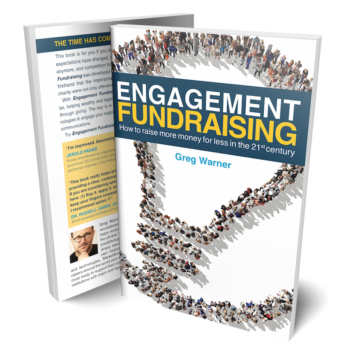We use cookies to ensure that we give you the best experience on our website. By continuing to use this site, you agree to our use of cookies in accordance with our Privacy Policy.
 Login
Login
Your Role
Challenges You Face
results
Learn
Resources
Company
What Advancement Must Become: Builders of Communities of Shared Interest


You don’t have to poke too far into most nonprofits’ fundraising results to see significant donor erosion, usually masked by a few large gifts each year. Many nonprofit leaders continue to ignore this reality. According to Bryan Harvey, an expert in institutional planning, “Organizations often favor optimism: realism can sometimes come across as defeatism. But optimism’s place is in executing change, not assessing risk. Diagnosis must be clear-headed and dispassionate. Misplaced optimism can leave the organization overconfident and underprepared.”
The cause of the erosion must be acknowledged – over-harvesting and under-planting. The only way to reverse the trend is to flip that equation. Advancement must be dedicated primarily to community building through responsive stewardship and constituent acquisition (not just donor acquisition). The goal, according to a 21-year-old whiz, should be to provide the means for “like-minded people to improve themselves as they improve their community.” “Their community” can mean their neighborhood, their profession, or favorite cause.
We have done philanthropy and philanthropists a great injustice by reducing them to one dimension, that of a financial supporter. One engages in philanthropy to improve community or society and, yes, to improve oneself in the process. The more we isolate philanthropy from community by defining it only as giving money, the more we uproot philanthropy from the soil that enriches it. When one is uprooted from the other, both philanthropy and community suffer. For the sake of fundraising glory, too many nonprofits nudged the community-oriented into that one-dimensional role, saying in effect, “you give to what we ask for and we’ll figure out the rest.” In a more corporate, hierarchical world, many complied. But shifting demographic tides and changing social mores left more and more people dissatisfied with one dimensional philanthropy. As a result, more than 20 million giving households have been “lost” in the U.S. in the last 30 years.
Positive pressure is now coming from donors who want to be treated like partners in community improvement. Post boomer generations are saying in effect, “We want to be brought in at the beginning and to work with accomplished peers, then we’ll talk about money.” They are echoing that 21-year-old whiz who, BTW, was Ben Franklin in 1727 upon founding what is considered to be our first civic organization.
We need to return philanthropy to its communal roots, to dedicate ourselves to community improvements and to repositioning fundraising as an outgrowth of those functions lest organizations grow out of relevance and philanthropy wither out of frustration or transplant itself in more responsive organizations coming out of the ground.
Jim Langley is the president of Langley Innovations. Langley Innovations provides a range of services to its clients to help them understand the cultural underpinnings of philanthropy and the psychology of donors and, with that knowledge, to develop the most effective strategies and tactics to build broader and more lasting communities of support. Jim has authored numerous books including his most recent book, The Future of Fundraising: Adapting to New Philanthropic Realities, published by Academic Impressions in 2020.
Related Resources:
- Webinar: 4-Step Process for “Reimagining Fundraising Operations”
- How Stereotyping Wealth Leads to Missed Fundraising Opportunities
- The 12 Donor Archetypes – How to Tap into Donor Identities and Generate Bigger Gifts
- Here’s What Supporters “Buy” When They Donate to Charity
LIKE THIS BLOG POST? LEAVE YOUR COMMENTS BELOW AND/OR SHARE IT WITH YOUR PEERS!
Get smarter with the SmartIdeas blog
Subscribe to our blog today and get actionable fundraising ideas delivered straight to your inbox!
